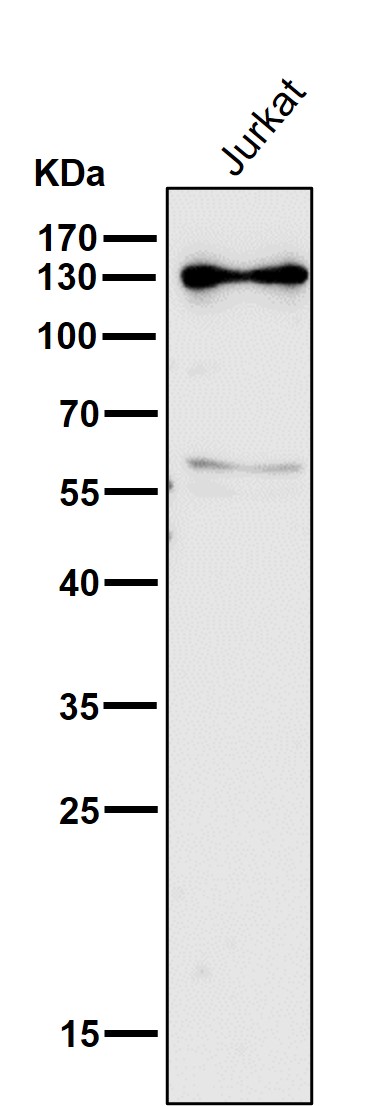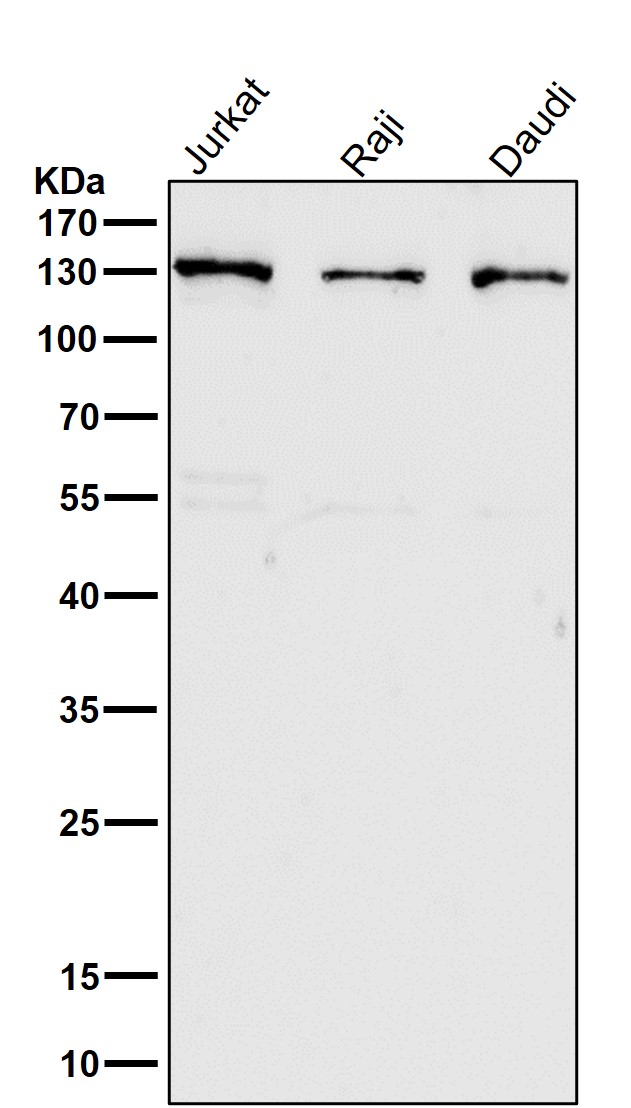


| WB | 1/1000-1/2000 | Human,Mouse,Rat |
| IF | 1/20-1/50 | Human,Mouse,Rat |
| IHC | IHC:1/100-1/200;IHF:1/50-1/200 | Human,Mouse,Rat |
| ICC | 1/50-1/200 | Human,Mouse,Rat |
| FCM | 1/20-1/100 | Human,Mouse,Rat |
| Elisa | 咨询技术 | Human,Mouse,Rat |
| Aliases | HUPF1; KIAA0221; NORF1; RENT1; pNORF1;;Regulator of nonsense transcripts 1 |
| WB Predicted band size | Calculated MW: 124 kDa ; Observed MW: 130 kDa |
| Host/Isotype | Rabbit IgG |
| Antibody Type | Primary antibody |
| Storage | Store at 4°C short term. Aliquot and store at -20°C long term. Avoid freeze/thaw cycles. |
| Species Reactivity | Human,Mouse |
| Immunogen | A synthesized peptide derived from human Regulator of nonsense transcripts 1 |
| Formulation | Purified antibody in PBS with 0.05% sodium azide,0.05% BSA and 50% glycerol. |
+ +
以下是关于RENT1/hUPF1抗体的3篇参考文献及其摘要内容概括:
1. **文献名称**:*"The human RNA surveillance factor hUPF1 is required for nonsense-mediated mRNA decay"*
**作者**:Mendell JT, et al.
**摘要**:该研究利用hUPF1抗体验证其在细胞中的表达及定位,发现hUPF1是无义介导mRNA降解(NMD)的核心调控蛋白,敲低hUPF1会显著抑制NMD通路,导致错误mRNA的异常积累。
2. **文献名称**:*"SMG6 interacts with the exon junction complex via two conserved EJC-binding motifs to mediate nonsense-mediated mRNA decay"*
**作者**:Kashima I, et al.
**摘要**:通过hUPF1抗体进行免疫共沉淀实验,证明hUPF1与SMG6蛋白直接相互作用,并参与NMD过程中外显子连接复合体(EJC)的识别,揭示了hUPF1磷酸化在此调控中的关键作用。
3. **文献名称**:*"hUPF1 phosphorylation induces conformational changes regulating its interaction with SMG-5 and SMG-7 during nonsense-mediated mRNA decay"*
**作者**:Lejeune F, et al.
**摘要**:该研究使用hUPF1特异性抗体分析其磷酸化状态,发现磷酸化修饰调控hUPF1与SMG-5/SMG-7的结合能力,进而影响NMD复合体的组装与功能,为疾病相关突变研究提供了分子机制基础。
(注:若需更多文献,可进一步补充特定应用场景的研究。)
The RENT1/hUPF1 antibody targets the human UPF1 protein, a central component of the nonsense-mediated mRNA decay (NMD) pathway. UPF1 (Up-frameshift 1), also known as RENT1 or regulator of nonsense transcripts 1. is an ATP-dependent RNA helicase critical for recognizing and degrading mRNAs containing premature termination codons (PTCs). This quality control mechanism prevents the production of truncated, potentially harmful proteins. UPF1 interacts with other NMD factors, including UPF2 and UPF3. and is recruited to mRNA surveillance complexes via exon junction complexes (EJCs) deposited during splicing. Its helicase activity facilitates mRNA remodeling, leading to decapping, deadenylation, and exonucleolytic degradation of faulty transcripts.
Antibodies against UPF1 are widely used in research to study NMD mechanisms, gene expression regulation, and diseases linked to aberrant mRNA surveillance, such as cancer and genetic disorders. These antibodies enable detection of UPF1 in techniques like Western blotting, immunofluorescence, and immunoprecipitation. Studies also explore UPF1's roles beyond NMD, including in stress granule formation, viral replication, and DNA repair. Phosphorylation of UPF1 (e.g., at Ser1096 and Ser1176) modulates its activity, and specific antibodies can distinguish phosphorylation states, aiding functional studies. As UPF1 is evolutionarily conserved, findings in human systems often align with models like yeast and C. elegans, underscoring its fundamental biological significance.
×